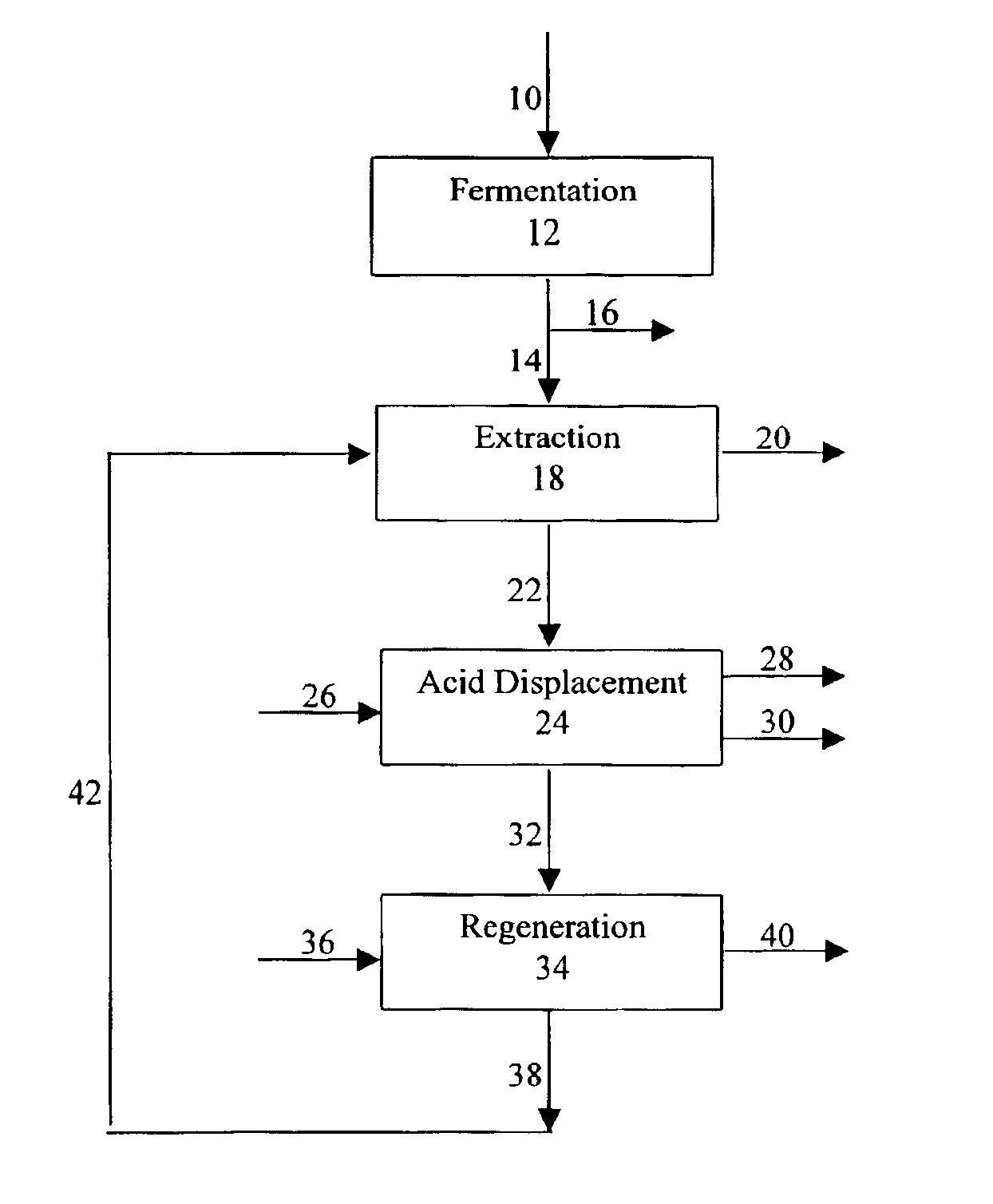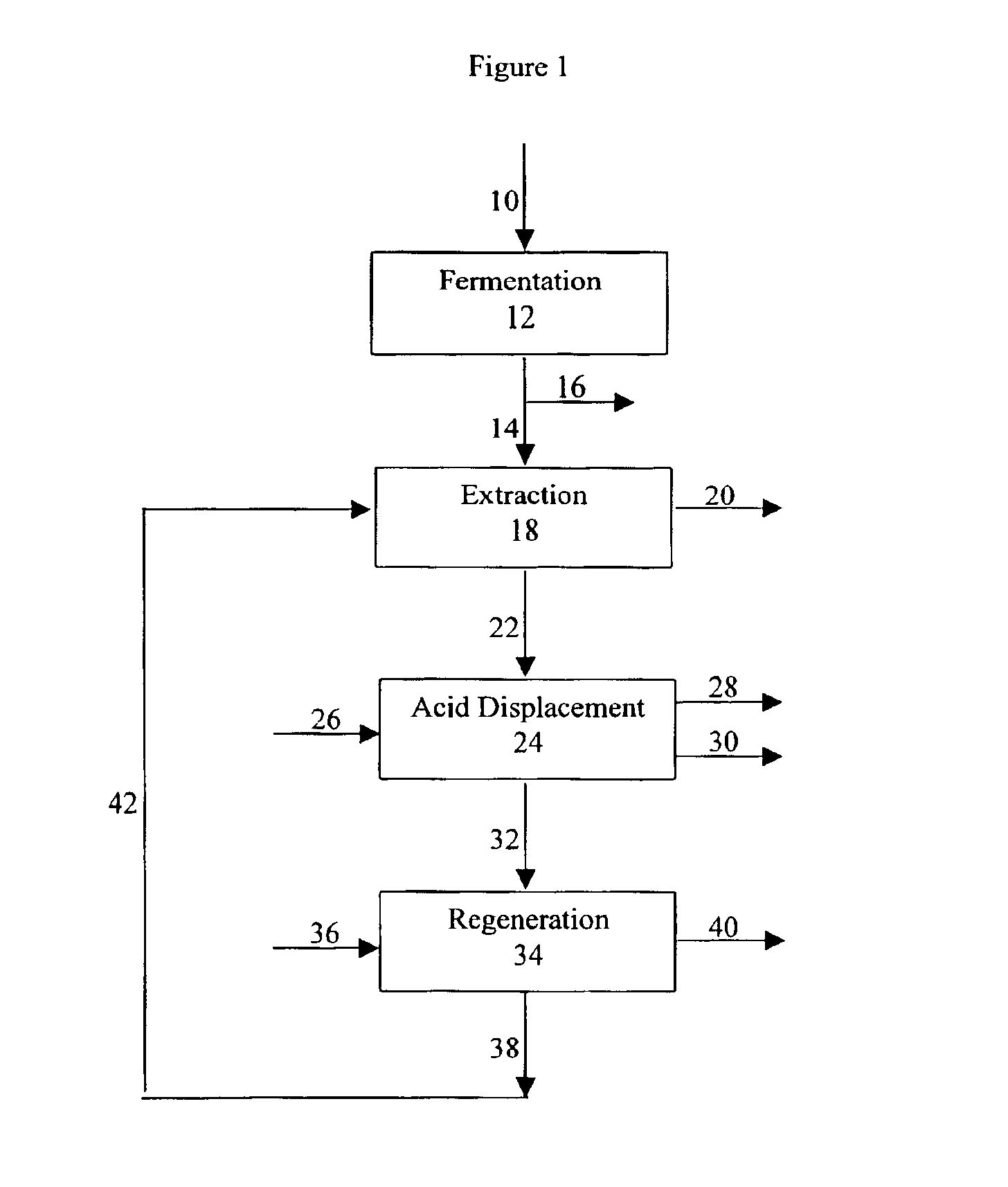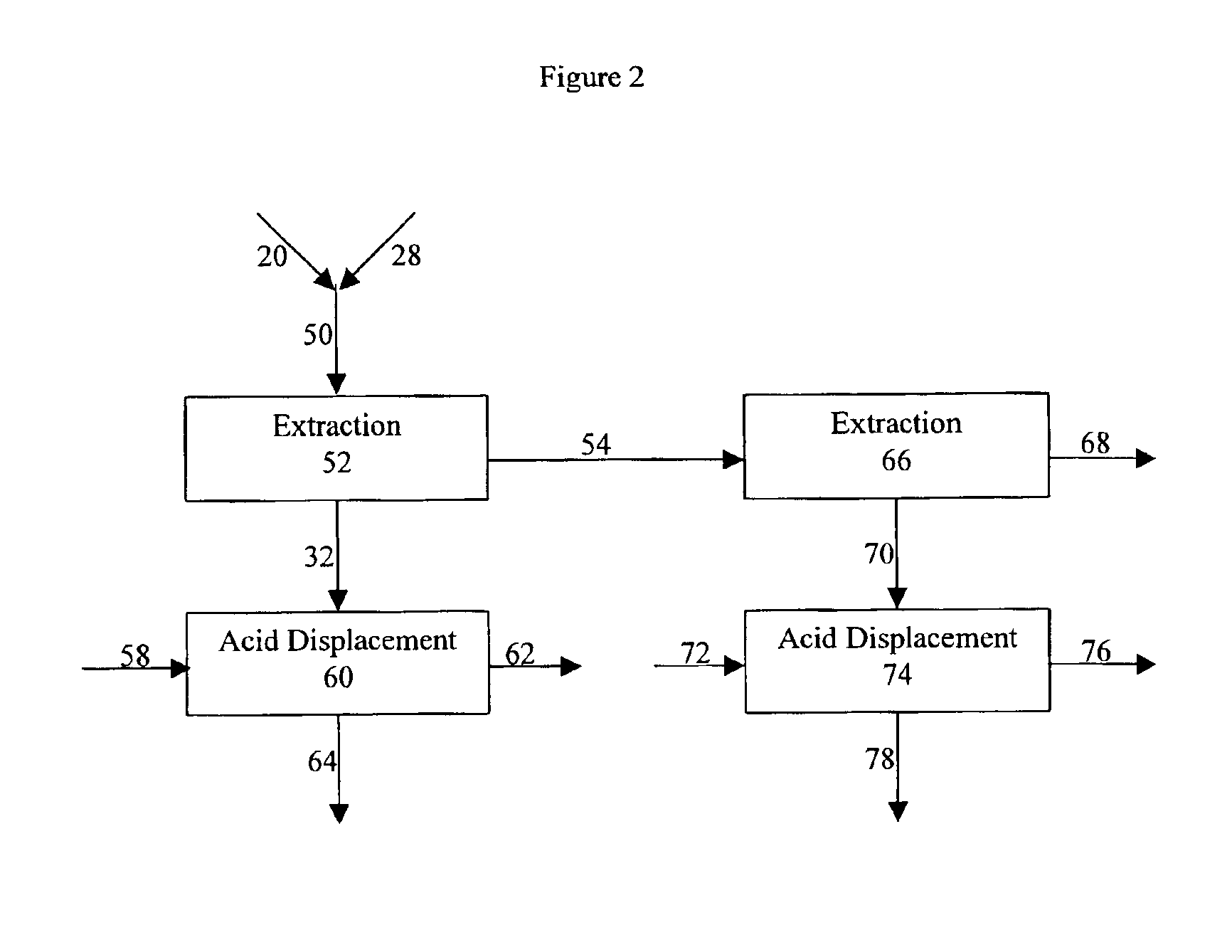Process for purifying an organic acid
a technology of purification process and organic acid, which is applied in the direction of ion exchange treatment, separation process, water/sewage treatment, etc., can solve the problems of inability to achieve the desired color, interfere with downstream processing, and negative effects of impurities on the production of lactic acid polymers
- Summary
- Abstract
- Description
- Claims
- Application Information
AI Technical Summary
Benefits of technology
Problems solved by technology
Method used
Image
Examples
example 1
Selectivity of Resin IRA-35 for Pyruvic Acid Relative to Excess Lactic Acid
[0077]
TABLE 1ConeEquilibriummole / literFeed SolutionLiquorResinKdSelectivityPyruvic Acid0.0050.0010.02426.911514.69Lactic Acid0.5030.3860.7061.832Lactic Dimer0.0060.0030.0196.7153.67
[0078]A feed solution of 3 ml was prepared as shown in Table 1 containing lactic acid and pyruvic acid in water. The feed was 45.3 gram / liter lactic acid and 440 mg / liter pyruvic acid, representing a typical fermentation broth stream. This was contacted with a weak base anion resin, IRA-35, at 20 deg C., in a single stage batch equilibration experiment. A selectivity of 14.69 for pyruvic acid relative to lactic acid was observed. A total of 81.8% of the pyruvic acid was removed from the solution onto the ion exchange resin in this single stage batch experiment, whereas only 23.4% of the lactic acid was removed.
example 2
Purification of a Lactic Acid Feed Stream Comprising Trace Amounts of Pyruvic Acid and Oxalic Acid Using a Packed Column (Multistage) Contactor with Continuous Flow
[0079]Three feed solutions were prepared to simulate fermentation broths comprising lactic acid. The first feed solution (FS1) was made combining 272.7 g 88% L-lactic acid (Pfansteihl), 2.572 g 95% pyruvic acid (Aldrich), 20.868 g 10% w / v oxalic acid (LabChem, Inc.), and deionized water to a volume of 4 liters. Similarly, a second feed solution (FS2) was prepared comprising 270.4 g 88% L-lactic acid, 2.424 g 95% pyruvic acid, 20.756 g 10% w / v oxalic acid, and deionized water in sufficient amount to attain a volume of four liters for the solution. A third feed solution (FS3) was prepared comprising 272.7 g 88% L-lactic acid, 2.4 g 95% pyruvic acid, 20.7 g 10% w / v oxalic acid, and deionized water in sufficient amount to attain a volume of four liters for the solution.
[0080]A 40 ml column was packed with Ionac A-365 weak bas...
example 3
Batchwise Treatment of Overhead Distillate from Lactic Acid Azeotropic Distillation
[0094]A fermentation broth containing lactic acid had previously been purified by azeotropic distillation and other steps. This product contained 19 ppm pyruvic acid and 260.9 g / L lactic acid. 4.5 ml of this material was treated with about 1.2 ml of a weak base anion exchange resin, Sybron Ionac A-365, in the hydroxy form in a simple batch equilibrium adsorption. Approximately 38% of the lactic was removed. Remarkably, 90% of the pyruvic acid was removed leaving a product with less than 2 ppm pyruvic acid. A selectivity for pyruvic acid relative to lactic acid of 14.73 was estimated.
[0095]Additionally, an unknown acid “strong impurity” with an elution time of 7.27 minutes in this particular HPLC chromatographic analysis protocol was observed to be 99% removed by this treatment, with a selectivity of about 54.
[0096]In the table below, a chromatographic response factor for the unknown peak at 210 nanome...
PUM
| Property | Measurement | Unit |
|---|---|---|
| temperature | aaaaa | aaaaa |
| temperature | aaaaa | aaaaa |
| pKa | aaaaa | aaaaa |
Abstract
Description
Claims
Application Information
 Login to View More
Login to View More - R&D
- Intellectual Property
- Life Sciences
- Materials
- Tech Scout
- Unparalleled Data Quality
- Higher Quality Content
- 60% Fewer Hallucinations
Browse by: Latest US Patents, China's latest patents, Technical Efficacy Thesaurus, Application Domain, Technology Topic, Popular Technical Reports.
© 2025 PatSnap. All rights reserved.Legal|Privacy policy|Modern Slavery Act Transparency Statement|Sitemap|About US| Contact US: help@patsnap.com



